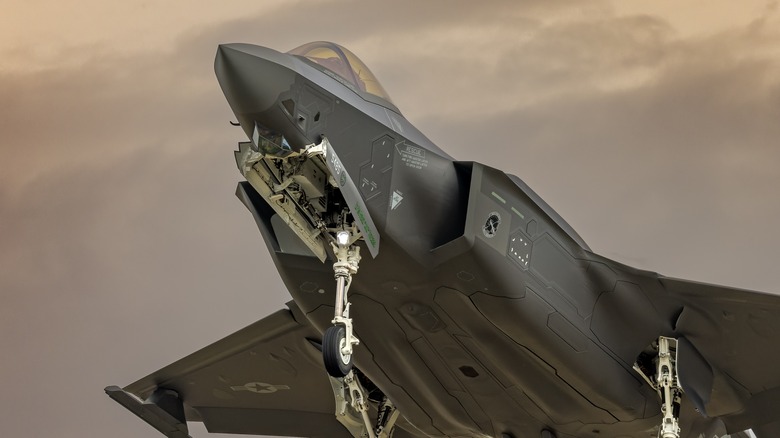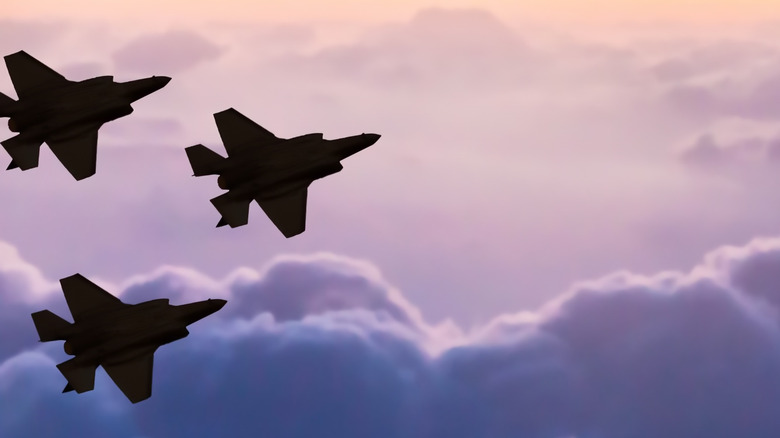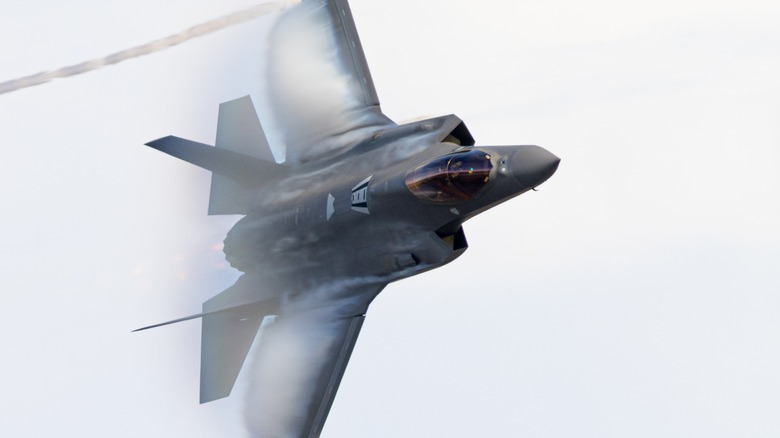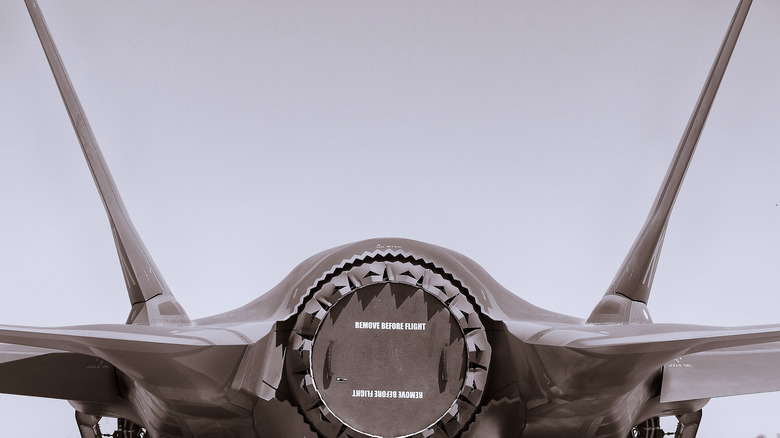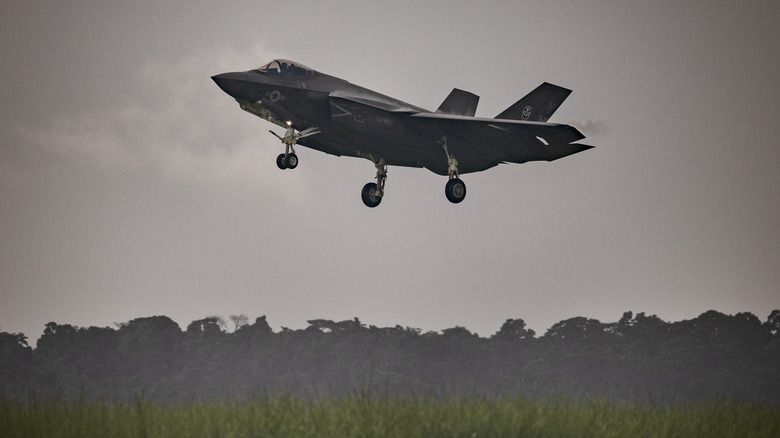The Hidden Costs Of The F-35: Factors That Go Beyond The Initial Price
Buy cheap, buy twice, as the old saying goes. In the world of tech, this certainly holds true. It's often better not to go straight for the cheapest option, as hidden costs can quickly accrue when a component wears out, the unit needs maintenance, etc. More significant purchases, then, should be longer-lasting, and (hopefully) involve fewer additional costs.
Of course, our more significant purchases will tend to be things like pieces of furniture, rather than state-of-the-art fighter jets. Nevertheless, for the United States and its allies, the F-35 doesn't just represent a significant initial outlay. There are a wide range of other expenses to consider beyond the price tag when determining exactly how much these fantastic fighters truly cost.
From the great shared expense of the international Joint Strike Fighter initiative to the costs of running, maintaining and updating its many complex systems, here are some of the biggest hidden costs associated with the formidable F-35 jet.
The Joint Strike Fighter initiative
Naturally, the development of an aircraft such as the F-35, which creator Lockheed Martin deems "the most lethal, survivable, and connected fighter jet in the world," was a time- and cash-consuming feat. To manage and coordinate efforts in this area, the Joint Strike Fighter program was born. It was so named because the resultant fighter, the F-35, was created to serve in the U.S. Air Force, Navy, and Army, with different variants more suited to each (the Navy wielding the F-35C and the Air Force the F-35A, for instance). These variations make it suitable for attacks in the air, on land, and everywhere in between.
The F-35 is also intended for use by the United States' NATO allies and other partners. The concept was to ensure costs remained manageable by laser-focusing on a specific blueprint for the aircraft's design. The advantages and the burdens would be shared, as those allied forces would contribute to the costs. It's a group project, then, and like all group projects, some participants will contribute rather more than others.
According to the U.S Government Accountability Office in May 2023, the Department of Defense believes that the cost to purchase, maintain, update, and run its F-35s for the time they're practical to use will be approximately $1.7 trillion. It's an astronomical figure, especially when considering that an F-35 costs about $75-80 million. That's just the beginning of things, though.
Running an F-35
Most vehicles, whether they're cheap and humble cars or $80 million fighter jets, cost a significant amount to run even once they're fully paid off. Fuel is a tremendous and universal expense, and it's absolutely one of the biggest hidden costs that must be considered in the case of the F-35.
In December 2021, Air & Cosmos International reported findings from the GAO the month before, which indicated that running an F-35 is a costly prospect indeed. Every hour of flight cost a princely $42,000 in 2020 dollars, around 36% more than that of an F-16. Part of the concept of the F-35 is to be a versatile craft, equipped for all manner of mission situations for different military forces. This would suggest many more flight hours than a more specialized craft may partake in, and so the expense for operators would theoretically mount.
Even with that initial expense taken care of, and with the cost of running the aircraft factored in, what about when it isn't running? That's a different kind of expense entirely.
Just keeping an F-35 in flight-worthy condition is costly
Accepting that the average purchase cost of an F-35 is around $85 million, it stands to reason that exacting care will have to be taken with it after the fact. After all, you wouldn't pay such an outrageous amount on a vehicle just to put a tarp over it or leave it in the garage.
The Center For Arms Control And Non-Proliferation noted, in a report updated in July 2021, that the price for every F-35 stands at between $110.3 million (for the F-35A) to $135.8 million (in the case of the F-35B). The center defined this price a little differently, above and beyond the aircraft's own price tag. "Ancillary costs like depot maintenance, ground support equipment, and spare parts" are vital to include too, as these are far from optional extras. The projected lifetime of the aircraft, the report noted at the time, is 66 years. That's a long time to manage these additional concerns.
These figures, of course, are subject to change over time, as maintenance efforts on pre-production and production models of an aircraft continue. The issue is, all such efforts have an associated dollar cost too, and issues and delays there have affected the cost of the project and the product alike since it began.
Pricey project, pricey product
If the F-35 does indeed last in the militaries of the United States and allies around the world for almost seven decades, it's fair to say that it will be subject to upgrades and modifications throughout much of that time. The inflating $1.7 trillion cost of the Joint Strike Fighter project may have taken this into account, but the problem it has faced is an enormous one: An aircraft that is not specialized for its role can be outclassed by some that are in particular areas, and for it to continue to excel and perform to a high standard, development and costs must rise.
The training of pilots who must be accomplished with a range of weaponry, too, is costly. Training a new pilot for an F35-A, Forbes reported from a 2019 RAND study, costs approximately $10.17 million. Adding more crew into the equation, these costs, too, can quickly skyrocket.
While financial issues continue to be very problematic, there's no denying that the project, the most expensive the DOD has embarked on, has tremendous potential. Creator Lockheed Martin notes that NATO will wield more than 400 F-35s by the end of the decade, and a lot of faith is being put into this extraordinary jet when it comes to global security. Let's hope no more get lost.
